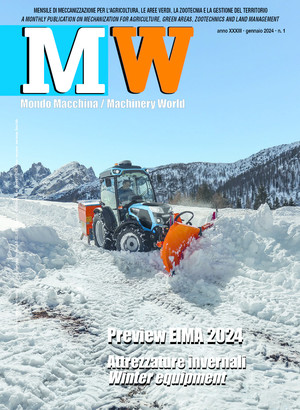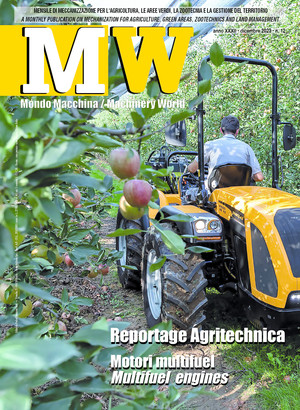
Comagarden: a focus on tourist green areas
The association of manufacturers of gardening and landscaping machinery and equipment announces one of the key themes of the next edition of EIMA Green, to be held in November 2020. Meanwhile, a conference on the design and management of green sites of value, carried out in Bari in the context of Agrilevante, previews some points of particular interest
Monumental gardens, historical residences, botanical gardens and parks of the hotels and thermal spring resorts are a cultural heritage, but also a great business. To maintain their formidable tourist appeal, these green places require constant maintenance, and therefore an increasingly efficient and sophisticated mechanization. Comagarden, the association that represents the industries producing mechanical tools for gardening and landscaping, highlights this point by announcing that in addition to the rich display of technologies, the next EIMA Green International Exhibition (Bologna, 11-15 November 2020) will offer a programme of meetings and seminars specifically dedicated to the theme of design and maintenance of “valuable” green areas. An interesting preview of this topic was offered by Comagarden during Agrilevante, the mechanization showcase that was held at the Bari exhibition centre from October 10 to 13 and which saw for the first time an exhibition section specifically dedicated to green care technologies. Agrilevante hosted a workshop entitled “Green Tourism, design and maintenance” attended by Renato Cifarelli, as President of Comagarden, Lorenzo Benvenuti of the TESAF of the University of Padua, and Antonio Leone of the “University of Salento and of the Polytechnic of Bari. “The Versailles park has over 7.5 million visitors every year, the Royal Palace of Caserta 940 thousand, the Borromean Islands in Lake Maggiore 700 thousand, the Sigurtà Park on Lake Garda 410 thousand - Cifarelli explained in his introductory speech - and there are many other tourist sites whose great attractions are the scenic tree layouts, the colourful flowerbeds, and in the geometric hedges”. “However, behind the aesthetics of these parks - Cifarelli warns - there is not only taste and creative talent, but also a set of specialized skills: botanical, naturalistic, agronomic and to a large extent technological. These concern the appropriate use of machines and tools, setting up and configuring the machines, and the manufacturing industries’ design of increasingly innovative and specific vehicles for every type of green maintenance, including those related to hanging gardens and “vertical greenery”. “The design of green areas is not only based on aesthetic criteria. Functional criteria must also be applied - pointed out Prof. Benvenuti - because the choice of the essences to be planted changes according to the environmental conditions and the way in which the green is used (the grass can be high or low yield, depending on how much it is subject to trampling, or even purely aesthetic use, and the hedges can serve as shelter, as acoustic screens, as a scenic aid, etc.) ”.
But first of all, green design must meet the psychological expectations of the public: “The large open lawns evoke the archetype of a lost Eden, and together they give rise to a sense of dominance and prevention of danger - Benvenuti explained - but the green space must also include parts of forest or hedges that hide portions of the landscape from view and that can satisfy a need for ‘mystery’ and ‘discovery’ that men seem to innatetely have”.
In addition to improving the aesthetics of the rooms and the psychological and physical well-being of people, green spaces are a powerful balancer of territorial systems, especially in urban and peri-urban contexts.
“The intensive urbanization carried out in many Italian cities between the 1950s and the 1980s (see the case of Bari, the subject of a specific research project) - explained Prof. Leone - produced the disappearance of green areas and waterways that would have had the function of absorbing and channelling rainfall, thus avoiding instability and flooding”.
“The ‘urban voids’ must therefore be filled with green essences - added Leone - while the corridors left to nature allow for so-called” soft mobility”, that is to say the transit of people, cyclists and even free animals, thereby also redeveloping the landscape and biodiversity”.
Whatever the development models of green tourism and recreation (some require more order and those that instead leave the plants to a more spontaneous development), mechanization becomes a decisive tool.
Lawnmowers, brushcutters, tractors and chainsaws with silent and battery-powered engines, but also robots and new highly automated devices, are increasingly needed to guarantee the widest range of maintenance and to contain costs, which will otherwise inevitably grow excessively, especially in sophisticated greens sites.








